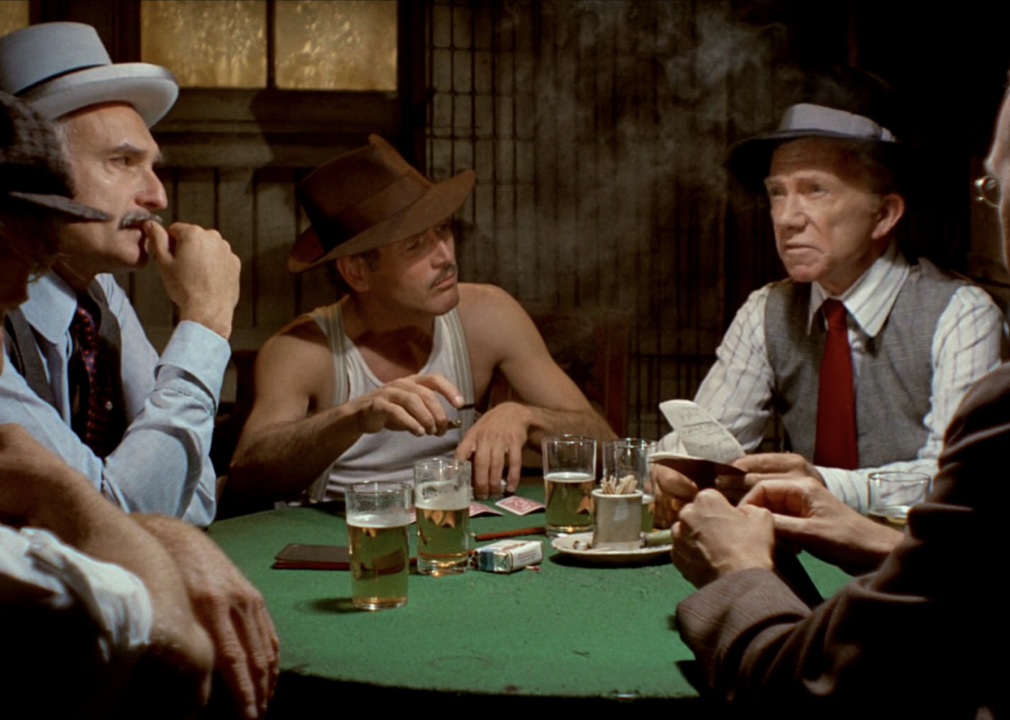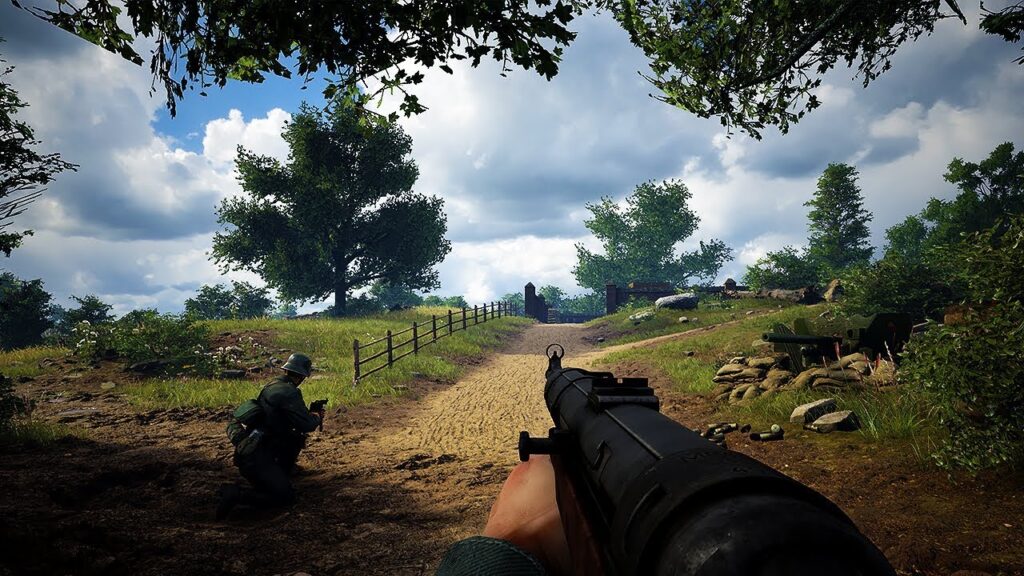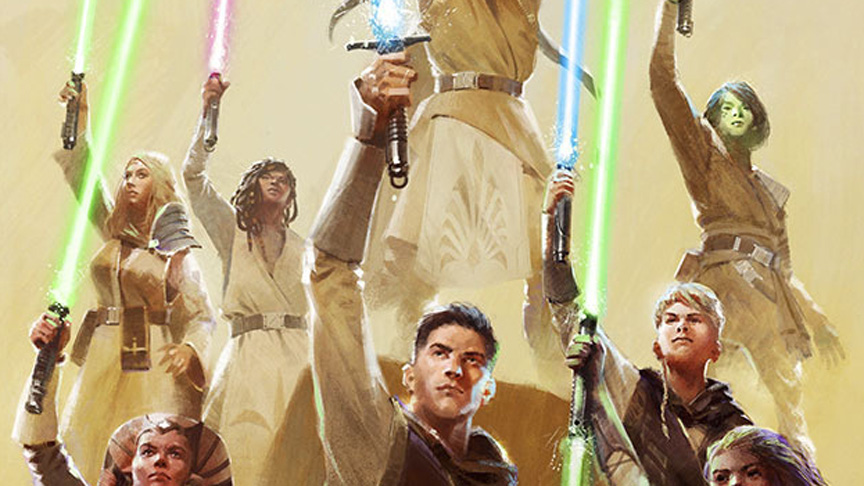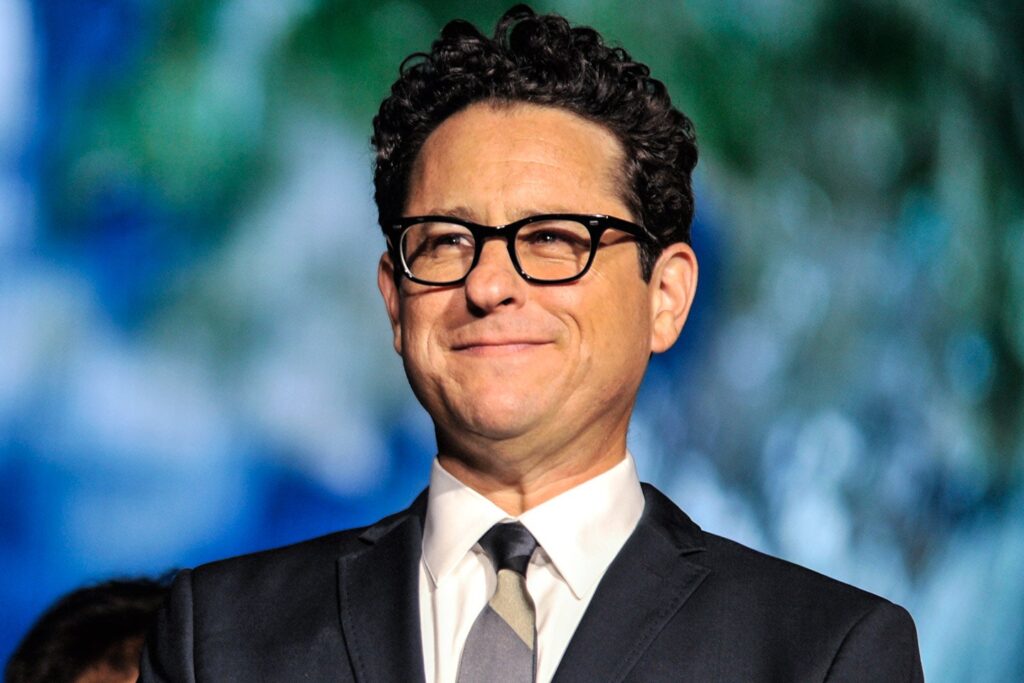Genre: Horror
Premise: After a botched delivery of fresh blood, a world weary vampire and a pregnant nurse team up to rob a hospital of their supply.
About: This script finished with 18 votes on last year’s Black List. The writer was one-third of a writing team that wrote the indie film, Samir, back in 2019, about an Arab man who was framed for the September 11th attacks. Otherwise, he has only written and directed short films. Conceivably, he would be directing Sang Froid as well.
Writer: Michael Basha
Details: 90 pages
 Joey King for Camille?
Joey King for Camille?
Carson, why do you hate the Black List?
Au contraire, mon frère.
I don’t hate the Black List. I hate the practice of campaigning for Black List votes for scripts that don’t deserve them. By the way, these are not debatable selections. The scripts that were lobbied onto the list were clearly lobbied. They are objectively weak.
That’s one of the reasons I do this. I want to celebrate the scripts that truly deserve to be celebrated. And I want you guys to know which ones don’t belong there so that when you read them and you see that they’re terrible and you get super confused because you’ve been told scripts need to be good to make the Black List. Well, now you know that that script only got on the list because it was lobbied.
However, I have great news for you. Today’s script is not one of those scripts. Today’s script deserves its Black List accolades. Let’s check it out.
30-something Paul looks like a boxer who’s just emerged from a 15 round slug fest. Every step forward is difficult for this guy. This guy, by the way, buys drugs every day at the park . Except they’re not drugs. They’re blood. Paul is a vampire.
Paul brings the latest batch of blood back to his Boss Vampire, Samy. Samy acts and speaks like she’s hundreds, if not thousands, of years old. She needs blood every night for her and her minions to survive. Paul is just the assistant. He only gets to keep enough for himself to stay alive.
Paul runs into an unfortunate problem. His blood guy moves out of town. And he’s assigned a new girl. Paul is furious about this. His boss isn’t the kind of person who takes kindly to late deliveries. So anything that could cause a hiccup in Paul’s daily schedule is dangerous.
Paul meets the girl, a scared 18 year old named Camille, and immediately sees that she’s pregnant. This is not what he signed up for so he’ll replace Camille tomorrow. However, today, he has no choice. He has to buy from her. Except just when he’s about to, two cops approach Paul, suspicious of what he’s up to.
Camille freaks out and runs to the bathroom to flush away all the blood. After Paul ditches the cops and learns that Camille did this, he’s furious. He needs that blood TONIGHT. Or else. Or else what? We’re never told. But we get the sense that it’s bad.
Paul convinces Camille to go back to the blood bank she works at to steal more bags. But when they get there, they learn there was a giant 20 car pile up on the expressway and all available blood in the area was picked up and transferred to the hospital. When Paul is confronted by the blood bank security guard, he stabs him. Which means the two of them are now wanted.
Paul and Camille will now have to infiltrate the hospital and get several of those blood bags so that Paul can get them back to Samy on time. But when they run late, Samy sends the big dogs after Paul. Which means now they’re not just trying to get blood, they’re trying to keep the blood that’s already inside them circulating.
There’s a moment in this script that convinced me this material was a cut above what I usually get from a screenwriter.
It occurs about midway through the screenplay. Paul and Camille are getting ice from a convenience store so they can keep the blood cold.
Literally, as they open up the freezer door to grab the ice, the big heavy, Seth, marches down the aisle. This guy is gigantic. He’s strong. He’s terrifying. And there’s no way around him. Their only option is to go through him.
Paul squares up against the guy for a fight.
Now, 99 times out of 100, in a genre screenplay like this, when this happens, our hero (in this case, Paul) channels this amazing ability to beat ass. He turns into this super-fighter and easily disposes of the threat.
Writers do this because it’s easy. And they think it’s going to look cool on screen.
But the truth of the matter is that so many characters do this these days, the audience has become numb to it. They’re bored. Which is why making this choice is boring.
Instead, in this script, Paul is overmatched. He takes a few swings but Seth handles him easily. He’s not just kind of stronger than Paul. He’s a million times stronger than Paul. So Paul gets his ass handed to him.
As I read this, I was so happy. Because this is what you should be doing in screenwriting. You should be making things hard for your hero. Not easy. If it’s easy for them, where’s the tension? Where’s the suspense? Where’s our fear that the hero is in danger?
That’s why this scene was so captivating to me. Because I feared for Paul. I had no idea how he was going to get out of this. As it so happens, he does get out of it. But it’s sloppy. It’s ugly. Things don’t go his way. But he’s able to take advantage of a couple of small opportunities to barely defeat Seth.
That spirit of dealing with obstacles in this unflattering difficult manner is what separated this script from so many others.
But it wasn’t the only thing. Something this script reminded me of was the power of a desperate character. When characters are desperate, they’ll do anything to achieve their goal. And we got a double dose of desperation in Sang Froid.
Both Paul and Camille are soooooo desperate for tonight to work out. Which necessitated that they engage in things they’d normally never engage in. You don’t break into a hospital to steal blood after the city’s police department has been notified of a man and a woman who just tried to rob a blood bank.
It’s not a smart move. But when you’re desperate, you have no choice. And that’s where things get really exciting in movies – when characters have to do dumb things because their situation warrants it.
Another thing I liked about this script is that it was STORY FIRST, VAMPIRES SECOND.
A lot of times genre writers love their genre so much that they want to spend dozens of pages introducing you to that world and touting the rules and screaming to the rooftops that this is a vampire movie and these are the ways my vampires live and vampire this and vampire that. Then, almost as an afterthought, they try and shoehorn a story into that.
Whereas, with Sang Froid, this was always a story first. Two people desperately need something and they spend the night trying to get that something and, oh yeah, vampire stuff pops up every once in a while. There’s no vampire vanity here. It only comes up when it needs to.
For example, Paul gets stabbed by the blood bank security guard early on and he starts bleeding. But the blood is cold and clear and runny. But we don’t dwell on that. They’re too busy. We’re then off to the next part of the story.
I love that. I love when the story takes precedence. That was my issue with Pinkerton, the JJ Abrams produced script I just reviewed in the newsletter. There were times where the writer seemed to want to get some point across about the world rather than fix the fact that his second act moved like a sloth in molasses.
Still another interesting thing about this script was the implied stakes. I’m usually a “MAKE THE STAKES CLEAR” guy. But they didn’t do that here. We didn’t quite know why Paul needed this blood tonight OR ELSE. We kind of had an idea. But we never went deep into the why. It was the mere fact that Paul seemed so desperate that we understood the stakes were high. At one point, he says to Camille, “What do you need in order to help me? Name your price.” She facetiously says, “A million dollars.” “Fine,” he replies. “You’ll have it by the end of tonight.”
That’s how high the stakes must have been. That he doesn’t blink at that kind of request.
Sang Froid is like the unofficial “grown up” sequel to Let the Right One In. It has that same tone. But it definitely feels more adult. I thought it was great. And I think it’s a great example of how to write a spec screenplay. A few characters. Sparse description. Keep the plot moving quickly. This is what all of you should be doing!
[ ] What the hell did I just read?
[ ] wasn’t for me
[ ] worth the read
[x] impressive
[ ] genius
What I learned: This script taught me that sexual tension works better when it’s an unexpected pairing. If you take two highly attractive people and they’re around the same age and their lives are going well and you try to create sexual tension off of that, you certainly can. But it’s going to be boring sexual tension because it’s so obvious. If you create sexual tension between people who would normally never be together, that’s a lot more intriguing. This dates all the way back to movies like Harold and Maude. You can see it in sitcoms today as well, such as with Andy and April Ludgate in Parks and Rec. We get most excited as an audience when there’s a spark where there wouldn’t normally be one. Paul is older and broken down. Camille is 19 and pregnant. There shouldn’t be anything here. And yet there is. And that’s a big reason why we keep turning the pages. We want to see what’s going to happen there.
Genre: Crime/Heist.
Premise: In 1960’s Dallas, a desperate wife of a losing gambler forms the Dollfaces, a group of misfit bandits who go on a spree of robbing underground card rooms run by the mafia to win back her husband’s losses.
About: This script competed in January’s Scriptshadow Logline Showdown. It was beaten by the behemoth that was Call of Judy. But it crawled its way off the battlefield and made it back to my computer, determined to get reviewed.
Writer: Alex Beattie
Details: 95 pages

So I was sitting there looking for a script to review. I had a few older spec sales that were in the running. As well as the scripts on the most recent Black List. But after Friday’s Logline Showdown Review, I realized that that poker logline from the Logline Showdown was still dancing around in my head. And I thought, “Why don’t I just review that?”
That’s the cool thing about Logline Showdown. If I like an idea, regardless of whether it wins or not, I can still review it! So that’s what I’m going to do gosh darnnit. I hope you all join me.
20-something Peggy Abbot lives in Dallas in the 1960s. Her husband is the world’s biggest loser. In more ways than one. The main way is that he’s gambled his family into an insane amount of debt via these local underground poker games that the mafia holds. It’s gotten so bad that he’s had to pawn his wife’s most expensive piece of jewelry, a pendant necklace.
Peggy is trying to keep it together despite being a month away from being kicked out of her home and having to raise two young children. She’s at her wit’s end. One night she follows her husband to one of these poker games wearing a mask, watches him lose the last of their money, then holds up the whole table with a gun. Due to a convenient distraction, she’s able to scoop up a few thousand dollars and make a run for it.
Peggy then meets a few people. There’s her snobby neighbor, Connie, who bothers Peggy about her unkempt yard. There’s Rhonda, a black woman who performs voodoo themed magic shows downtown. And there’s Rhonda’s roommate, Gertrude, a buff Hungarian woman who could probably beat up all of the Avengers and still have enough strength left for leg day.
Peggy explains what she was able to do all by herself and pitches them becoming a group that routinely crashes these underground games and steals their money. All three women have their own reasons for needing money so they’re in! The team grabs themselves three more masks, becomes the dollfaces, and starts robbing card games.
Everything is going swell until one of the mobsters, a hot dude named Vincent who knows Peggy through other circumstances, figures out she’s a dollface. He takes her out to the middle nowhere to kill her but then, inexplicably leaves her there. It’s then that she realizes Vincent is working undercover for the Feds. But, Vincent says, in order to keep that cover, he’ll have to kill her the next time she tries to rob them. Will Peggy and the Dollfaces listen? Or will she hang up her mask for good?
Loglines are funny things.
Sometimes, you see in them what you want to see rather than what’s actually there.
And with this logline, what I was most attracted to was this idea of a group of women infiltrating these poker games, a traditionally male activity, and beating them at poker. So, basically, beating them at their own game. I thought that would be a really fun movie. Sort of a twist on that movie, “21,”
But it turns out the women just go into these games with brute force and rob the men.
I’m not saying that’s a bad idea. There’s still a movie there. If there’s one thing that sets this logline apart from its competition, it’s that it’s exactly what Hollywood is looking for right now.
One of the things Hollywood loves is when you lean into a trend but find a way where it doesn’t feel so obvious. For example, if everything was the same with this concept, except it was set in 2023, it would be too on-the-nose. It would be, “#METOO #WOMENSEMPOWERMENT.” By setting in the 60s, it feels more genuine and like its own thing.
But the reason I think brute force robbery isn’t as good as the women playing poker games is that brute force robbery does’t take any thought. Indeed, the majority of these robberies require zero thinking whatsoever. It’s literally, “Okay, you act strong. You distract them. You keep the car running. I’ll yell and collect the money.”
It’s so much more satisfying for audiences when your heroes have to outthink the antagonists. Or, in the case of what I was hoping for, beat them at their own game.
Screenplays are a funny thing.
Because when they don’t give you what you hoped for, they never quite recover. Even when the writing is strong. And I do think the writing is strong here.
Alex introduces us to our characters. He sets up their dire circumstances. He shows the bad guys taking advantage of people, so that we’ll want to see them go down. He throws in the occasional twist. And he keeps the story moving at a brisk pace. Maybe the first act could’ve moved a little quicker. But once we got to the second act, we were constantly moving forward.
So why isn’t this a “worth the read?” Is it just because I wanted a different movie?
No.
I don’t think Peggy was set up well. Her introductory scene has another character, Connie, outshine her (Connie is upset because Peggy’s uncut lawn is driving down the value of Connie’s home). That’s unacceptable. I cannot stress how unacceptable that is.
This is f***ing screenwriting, man. Nobody gives you the benefit of the doubt. You don’t get to introduce the most important character in your story in a passive capacity where she’s outshone by another character.
If you have HBO Max, go watch the opening scene of Enlightened. Watch how that character is introduced. Better yet, here it is.
I’m not saying that every character needs to have a breakdown to have an impactful introduction but you need SOMETHING. A character needs to POP when you introduce them. I was 20-30 pages into his when I realized, “Oh, I guess Peggy is our main character.” That shouldn’t be something I gradually realize.
Another problem here is that the robberies all felt the same. This is why I wanted them playing poker rather than robbing. Because poker allows for unique scenarios every time. Sticking a gun in someone’s face and saying, “Give us the money” can’t evolve that much.
There were some small developments like the bad guys bringing over some OG mafia men from the old country. But the robberies (minus the climax) still felt the same. Also, since they’re robbing the same people over and over again – trained Mafia mind you – you would think that our Mafia would be more prepared. Yet they never are.
You want to do the opposite of that in screenwriting. You want to make things hard for your heroes. Not easy. I would’ve made their second robbery 10 times more difficult than their first. And their third robbery 10 times more difficult than their second. Make your heroes have to work for it. Everything’s too easy here.
This script has some good bones. But it needs to be stuffed inside a nuclear reactor. It’s all a little too casual. Regardless, I wish Alex luck with it. Especially because I can see agents and production companies being interested in a movie like this. So I hope something comes of it.
Screenplay Link: Poker Dollface
[ ] What the hell did I just read?
[x] wasn’t for me
[ ] worth the read
[ ] impressive
[ ] genius
What I learned: “I Need To Set Her Up Syndrome” – I Need To Set Her Up Syndrome is when you’re so focused on ticking all the boxes that you want the reader to know about your hero that you forget to actually introduce them in a powerful memorable entertaining way. Sure, I know that Peggy has two young children and her yard isn’t well-kept because they’re low on money and that her husband kinda sucks. Great, I’m glad I have that information. But guess what? I’m bored. That’s the scratch you have to itch first – MAKING YOUR READER NOT BORED. Not the exposition scratch. That should always be the secondary scratch.
No post today. You’ll just have to enjoy the Newsletter. That’s IF YOU GET the Newsletter. And if you don’t get the newsletter, I’d highly recommend that you sign up because we’ve got a whopper for you today. I review a screenplay that JJ Abrams is involved in that is trying to do something that’s NEVER BEEN DONE IN HOLLYWOOD BEFORE. To say that he’s trying to change the very fabric of Hollywood is an understatement. The best thing about the review is I tell you whether he’s going to succeed or not.
I also talk about the DC slate that James Gunn laid out, which I think is awesome. I then discuss the Oscar screenwriting nominees. Things get heated when I start discussing Banshees vs. Everything Everywhere. We’ve got two GREAT screenwriting tips. Some of the most valuable I’ve ever offered in the newsletter. We’ve got a couple of Star Wars cameos. One in relation to JJ and another in relation to an actor whose career was thought to have been destroyed by the franchise who’s made a comeback in, what is shaping up to be, the best movie to come out of Sundance.
So, yes, there’s a lot to talk about!
And if you’d like me to send you this newsletter right now, e-mail me at carsonreeves1@gmail.com!
Genre: Action/Adventure
Winning Logline: When a lonely kid gets lost in a next-gen VR gaming experience, the only person who can rescue him is his mom, who’s never played a videogame in her life.
About: Today’s logline won the first ever Scriptshadow Logline Showdown. If you want to compete in the next Logline Showdown, get your title, genre, and logline into me by Thursday, February 16th at 10pm Pacific Time. I will pick my five favorite loglines from the entries. Readers of the site will then vote for their favorite and the script will get a review on the site the following Friday. All entries need to be sent to carsonreeves3@gmail.com.
Writer: David Laurie
Details: 99 pages

Yeah baby!
You’ve seen it in the comments.
You’ve seen it in the Showdown.
Now, you see it reviewed on the site.
CALL OF JUDY!
13 year old Brooklyn kid, Bop Tan, a Chinese-American, is lucky that he has gaming. Because his life is pretty sucky. His mother and father are divorced. His mother is always working (as a janitor at a superstore). And he gets chased by bullies every day.
Luckily, Bop has been invited to a big launch event for Virtue-Ally, a top tier virtual reality game world that’s going to revolutionize the industry. At least according to its CEO, Oswald Merriweather.
As Bop reminds us, this is the most important day of his life. Which is why, for once, his mother, Judy, is going to move mountains to make sure she gets out of work early and can attend.
The event takes place in a blocked off street with a big black pyramid in the middle and thousands of screaming gamer fans outside. There is a big screen that allows for the crowd too see what’s happening inside the virtual game.
But when Judy gets to the event, she can’t find her son. So she stumbles into the pyramid (I’m not sure how she was able to get in while the thousands of screaming fans were not) and, after some smoky theatrics, she finds herself plummeting onto a World War 2 battlefield, where she meets three English soldiers, Tom, Dick, and Harry.
Judy just wants to find her son. But Tom, Dick, and Harry say they’ve got more important matters to take care of – namely eliminating a gun nest at the top of a hill. Judy tries to tell the soldiers that they’re in a video game but they don’t seem to know what a video game is.
After several dust-ups with the enemy, Judy and Harry get transported to a different game, this one a three-dimensional side-scroller that’s a virtual take on “Don’t Fall In The Lava.” At this point, an injured Harry starts to understand that he’s not in Normandy anymore. But he still doesn’t really know what’s going on.
It’s there that Judy meets Duck, a cute little toy bunny, who’s seen Bop. They travel up and up higher through the levels until they make it to the next porthole, which brings them into Crime City, a sort of Grand Theft Auto meets Fortnite game. There they have to deal with a psychotic guns-obsessed female villain named Amy.
After somehow surviving her, Judy finally finds Bop and they go home. Or do they? They realize that the last level is actually a virtual mirror of the real world, and Judy will have to take down the people in her life she hates the most, her ex-husband and her boss. Thank God she has her son’s game expertise to help her do it.
First of all, I want to congratulate David on winning the first ever Scriptshadow Logline Showdown.
I also want to scream at him because, after reading this, I now want to buy a game system.
As for the script, I thought some of the set pieces were fun. But I had a tough time getting into this story. Full disclosure, I’m short on time so, if I didn’t understand something, I just kept reading. I didn’t go back and try and figure it out.
For anyone crying foul about that, I have bad news for you. This is how everyone in Hollywood reads scripts. If they’re not clear on something the first time through, they don’t go back and re-read.
But, in fairness to David, if anything was unclear to me, he may be able to point out that it was, indeed, explained at some point.
My main issue with the script was the first act. It’s hard to follow. Bop is going to this video game event but it’s mostly shrouded in mystery. We don’t really understand it. We just know it’s important on some level to him.
We then have Judy, who, I believed, was coming to this event to see her son perform in the game. However, when she gets there, she sort of stumbles inside the pyramid structure that’s the center of the event, looking for Bop.
Once inside, the place fills up with smoke, and she’s sent into the virtual reality game without explanation. Once she lands in World War 2, only then do we start to put two and two together and realize that the creator of this virtual reality purposefully trapped Bop in the game so that Judy would have to find him.
It’s kind of hard to understand because I don’t know how Oswald knew Judy would come and why he concocted this plan by which he makes a mom find her son. It seems very random. I mean, he’s the head of a trillion dollar company. Isn’t he more worried about selling millions of systems?
This felt like it needed a clearly defined “lost child” scenario. Bop goes and beta tests this video game for Virtu-Ally. To Oswald’s shock, Bop gets lost in the game and they can’t find him. They look but he’s nowhere to be found. Finally, they have no choice but to inform Judy. And maybe Oswald thinks that the only person who’s going to be able to find him is the mom. So he asks her to go in.
It’s much simpler.
The vagueness through which this journey begins basically kills the script before it gets started. Cause if the “how” of the journey is confusing, the audience is going to decide then and there that they’re not going to go on the journey with you.
Once on the journey, we run into more clarity problems. In fairness, this might be because I was not re-reading anything, as I discussed. But the second we land inside World War 2, we’re told that we have to get up to the top of some hill and take out a gun or something. I didn’t really understand what we were doing.
I’m not even sure I knew that Janet knew that the reason she was placed in this game was to find her son. She stumbles into that pyramid and then, bam, she’s in World War 2 for some reason. Nobody sits her down and clearly explains what’s going on, making the narrative confusing to the viewer.
While this is happening, we’re cutting back to Oswald and his two main programmers, and Oswald seems very determined to give Judy the best game experience possible. Which further confused me. Is this movie about a man trying to show our heroine how to enjoy video games? Or is it about a mom trying to rescue her son in a video game? If I were quizzed on this question, I would probably get it wrong.
And then we have Bop himself. Is he in danger? Can he potentially die? I never got the feeling he could. And if the stakes aren’t that Bop could die, I don’t think there’s a movie here. If Bop isn’t truly in danger, then why does Janet need to go looking for him? Go home, wait for Bop to get bored in the game, he’ll come home and you guys can order pizza.
99% of the time, when there’s a problem with a script, it’s in the setup. Something in the setup destroys the reader’s suspension of disbelief. And that’s what I would say happened here. The lack of clarity of what was going on and why Judy needed to enter this game took me out of the script. It had me asking questions left and right.
My biggest note to David, then, would be to have a “HERE’S THE PROBLEM AND HERE’S WHAT WE NEED YOU TO DO” scene at the end of the first act. Think about when the CIA comes to Indiana Jones and tells him about the Ark. We need THAT kind of scene here.
Oswald comes to Judy. He explains that her son is lost in his new game (the PROBLEM). He’s sent people after him but they can’t find him. So, he believes, the only person who can find him is his mom. Which is why he’s come to her. He wants her to go in the game and retrieve her son (“Here’s what you need to do.”).
I also think there needs to be a bigger mom-son conflict here. Similar to the mother’s conflict with her daughter in Everything Everywhere All At Once. Cause, basically, this should be a “runaway” narrative. The son is sick of his mother. So he runs away. The difference is, he runs away in the virtual world instead of in the real world.
That way, this isn’t just about physically finding her son. It’s about fixing years and years of a broken relationship. It’s about truly finding her son, as a person. There’s a little bit of that here, but the whole thing about “Mommy won’t play video games with me” isn’t enough.
One of the ways to look at screenwriting is it’s not just that one day you learn how to wrote a great script. It’s a process. The first stage of that process is learning how to write a first act. Which is challenging because you have to set up your plot, set up your characters, you have to do so in an entertaining way, and then you have to do so with clarity.
Once you learn how to write first acts, you have to learn how to write a second act. That’s its own challenge. You have to learn to escalate the story and keep throwing new and interesting obstacles at your hero, as well as explore the central character’s arc.
Once you figure that out, you have to learn how to write a third act. The hardest thing with the third act is that your story charges towards this obvious inevitable conclusion. Yet you must find a way to still make that compelling. We all know that Liam Neeson is going to find his daughter. But how do we still make that exciting?
At least based on this script, I think David still needs to learn how to nail the first act. It’s just not there. Basic things like clarity are not on point. Hopefully, I’ve given him some ideas on how to improve that. And I’m sure everyone here in the comments will offer equally helpful advice.
Congrats again to David for winning. You can read the screenplay here!
[ ] What the hell did I just read?
[x] wasn’t for me
[ ] worth the read
[ ] impressive
[ ] genius
What I learned: “Passers-by flicker HORROR at his face.” Be careful about trying to be too clever with your writing. It feels good in the moment. But the only thing that matters in the end is clarity. If we don’t understand what you mean, we’re distanced from your story. “Passers-by flicker HORROR at his face.” What does that mean? I don’t know. If you ever run up against a potentially complicated description, write out the line like you’re writing it for a second grader and then, if you need to, make minor adjustments from there. “As he walks down the street, people stare back at him, horrified looks on their faces.” We understand that sentence, right? So why change it? Why make things harder on ourselves?
You may not have asked for it. But you’re sure as heck getting it. Another Star Wars article! (Hey, at least this time I tied it to screenwriting)

The Mandalorian Season 3 is just around the corner. And the most recent trailer has gotten me thinking about Star Wars.
I actually liked the trailer. As of today, The Mandalorian remains the closest we’ve gotten to Lucas’s original vision since Disney took over Lucasfilm. And a big reason for that is that Jon Favreau and Dave Filoni understand something about Lucas that many of these other people who have gotten Star Wars movies and shows don’t have a clue about.
Whimsy.
“Whimsy” just means playful, quaint, fanciful humor. It’s a surface-level component of storytelling. There’s no deeper meaning to it. But the more you watch Star Wars, the more you realize that whimsy is its secret sauce.
A perfect example of whimsy is the MSE-6 mouse droid, the thing that scoots away in the Death Star when Chewbacca roars at it. Another would be the giant frog creature outside of Jabba’s hut that snaps up kitten sized creatures with its tongue.
These things don’t have any deeper significance to the story. But they subconsciously make the world feel richer, which, in turn, tricks the mind into thinking these alien civilizations really do exist. Not to mention, they add that element of weird fun that differentiates Star Wars from all the competition.

It’s why you get the shot of Salacius B. Crumb’s cousin up there in the tree in the newest Mandalorian trailer. These guys understand the importance of Lucas’s obsession with whimsy.
But The Mandalorian is still Star Wars Lite. Which is scary when you consider that it’s the best thing Star Wars has to offer post-Disney acquisition.
Why do I call it “Star Wars Lite?” Because what are the stakes? They used to be getting Baby Yoda to safety. But they got him to safety, and apparently, safety gave him back. So what’s so important about this latest journey? I’m sure the writers will come up with something. But stories never work well when you have to add stakes retroactively. The stakes need to be baked into the concept.
This is what made the original Star Wars! Stakes. There was a planet-destroying moon run by an evil Emperor going around the galaxy blowing up planets. How do stakes get any bigger than that?
That’s been a curse Star Wars has been unable to outrun. They’ve had to consistently come up with stakes that match or exceed the Death Star. And so far, they’ve failed.
Indeed, it is why Obi-Wan was such a dud. At least The Mandalorian could claim that Baby Yoda was the secret to the future of the Force throughout the galaxy. The only stakes in Obi-Wan seemed to be to get an annoyed Baby Leia back home before dinner.
Yet another reason Star Wars continues to flounder is the archetype problem.
For those who don’t know, George Lucas built the original Star Wars around Joseph Campbell’s, “The Hero’s Journey.” It’s actually quite astounding the way that material inspired him because he basically wrote the original Hero’s Journey and just crossed out the characters’ names and replaced them with Luke Skywalker and Darth Vader. It’s a reminder of how getting the right inspiration at the right moment can be the key to writing something great.
But the thing about The Hero’s Journey is that each character plays a very specific role. There’s the hero, there’s the mentor, there’s the trickster, there’s the guardian. Those characters are constructed to fit a very narrow purpose in the story. The mentor, for example, is there to offer guidance and wisdom to the hero.
Therefore, when you try and extrapolate these smaller side-characters into their own shows and movies, with these bigger storylines and larger character demands, it never quite works. Maybe this is a weird analogy but I just made cookies last night, so go with it – it would be like making cookies, only for you to realize after you cooked them that you forgot to add sugar, so you then went and sprinkled sugar all over the cookies. No matter how much sugar you add, they’re not going to taste right.
The Boba Fett show bumped up against this issue head on. Boba Fett was Star Wars’s biggest bada$$. And that’s exactly who they showed us in the teaser for the show at the end of The Manadlorian Season 2. They showed Boba Fett walk into Jabba the Hutt’s palace, heartlessly shoot his successor, Bib Fortuna, then take the throne.
It was the perfect representation of Boba Fett’s archetype. But when they actually had to make a show, and spread Boba Fett’s plotline over six episodes, having a ruthless cold-hearted killer didn’t work anymore. They had to make him softer. So that’s exactly what they did. And, in doing so, THEY MOVED AWAY FROM THE ARCHETYPE.
This is why these characters don’t work in expanded roles. Because you have to move away from the things that people liked so much about them. The same thing happened with Han Solo, albeit on a smaller scale. In Star Wars, Han Solo’s archetype, the Trickster, reveled in its edge. Of course, the character could be edgy because he only had to serve as an accomplice to the hero. As soon as you took him away from that archetype, he lost what we loved about him.
A lack of whimsy, a complex relationship with stakes, and an archetype problem, have placed Star Wars inside an iron lung machine, made it the Bubble Boy of franchises. And it looks like it’s only going to get worse from here. This upcoming Acolyte series is built around what the Star Wars community universally agrees is the worst thing about Star Wars, the High Republic Era. Ashoka is based on a cartoon character who only serious die-hard fans care about. I like Jon Watts but a show built around children (Skeleton Crew) probably isn’t going to cater to long-time Star Wars fans.
 The High Republic
The High Republic
And this says nothing about the actual feature film plan, which seems to be non-existent. Kathleen Kennedy keeps scrapping everything she greenlights because she knows the truth – that there is no Star Wars feature film plan. They screwed up the Skywalker saga. So there are no more trilogies to mine from that. Which means you have to make one-offs.
But Star Wars isn’t a one-off franchise. It goes back to stakes. If you’re making one movie in one little part of the universe, the stakes are going to be low and people aren’t going to care. Making some offbeat Taika Waititi Star Wars movie set on the bantha origin planet of CousCoux sounds fine if you’ve got two healthy garguatun trilogies running concurrently. But if The Battle of CousCoux is the only Star Wars movie you have? You’re going to lose Star Wars. You are. Cause people are going to be like, “That’s it? A fun harmless little Star Wars movie? I was expecting more.”
So what’s the solution?
This is where things get scary. There may not be a solution. Star Wars may soon end up being one of those franchises that picks at the bones of its carcasses, like The Terminators and Aliens of the world. It’s hard to write a good story period. But it’s harder to write a good story when all the good stories in your franchise have been used up.
You’ve used up your Hero’s Journey template since you’ve built two trilogies off it. So now what? Can you introduce a Mad Max like hero? Or a Tony Stark like hero? Make them the face of a trilogy? I don’t think you can. Star Wars, at its heart, is about wonder. It’s about having these outsized dreams of doing something bigger with your life, like Luke Skywalker wanting to fight for the Rebellion. And that requires a younger “stars in their eyes” protagonist.
I know one thing for sure, though. You gotta stop making TV shows. Star Wars is using television to ignore the elephant in the room, which is that Lucasfilm is terrified to make movies. They’re terrified because they know if they screw up two more times, Star Wars, as a top tier franchise, is dead. Lucasfilm knows they can better hide failures on the TV side, which is why they keep making all these shows.
But sooner or later, they have to make movies because Star Wars IS A THEATRICAL FRANCHISE. Movies = high stakes. Playing in television is like playing in the kiddie pool. It’s fun and it’s safe. But you’re just treading urine-infested water.
So I’ll ask you again, what’s the solution?
You need to go back to the source. The source is The Hero’s Journey. But since you can’t do a Hero’s Journey anymore, you have to go back even further, to the things that inspired The Hero’s Journey. We’re talking about the wide range of cultural myths and legends from ancient Greece, Hinduism, Buddhism, and Native American cultures, that gave you those story components that make up The Hero’s Journey.
A good example is the Star Wars video game, Knights of the Old Republic, which is basically a take on Cain and Abel. Two brothers were raised and each one went off on a different path, one to the Dark Side and the other to the Light. I could see a franchise being built around this dual-protagonist rivalry between brothers. And it would work because its bones are built from the same matter the original Star Wars was built from.

But, look, nobody said this stuff was easy. If I could easily come up with a great Star Wars idea, I’d be busy writing the next Star Wars movie for Lucasfilm (assuming they could get over me ripping them all the time). But I do think the Star Wars franchise needs to be built on top of a feature spine. It’s not a small potatoes franchise. It can have TV shows, but they should be supplementary, not the whole shebang.
You can dance with the TV devil for another year or two. But sooner or later, this franchises collapses if you don’t put a trilogy out there.


